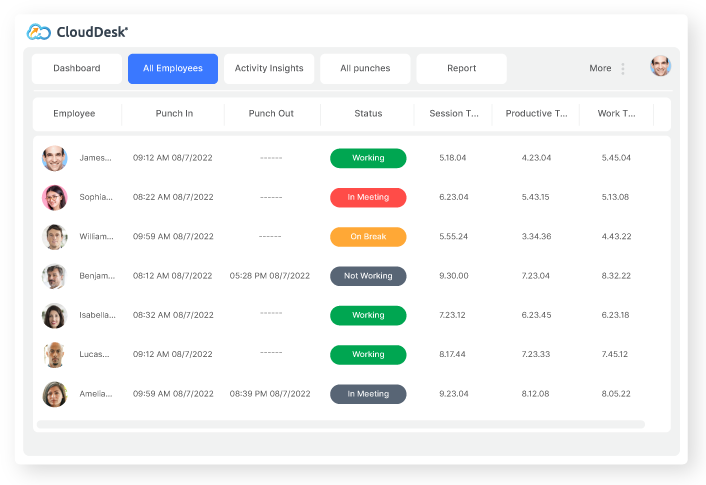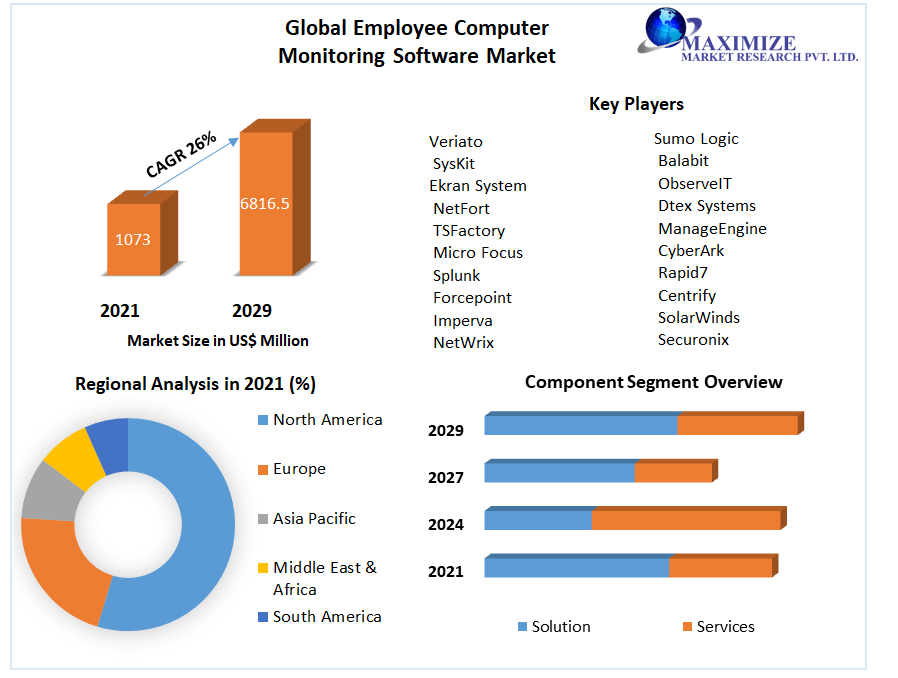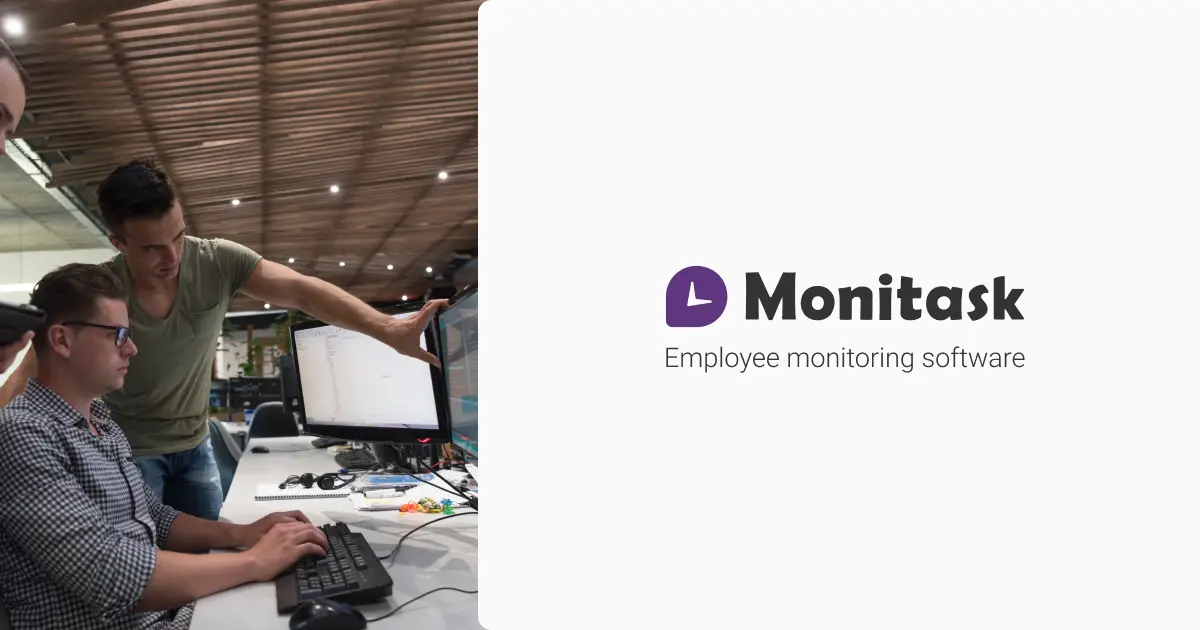The term "employee monitoring software" refers to a type of software used by organizations to track and monitor the activities of their employees while they work. It lets employers collect information on different aspects of employee behaviors, including internet usage as well as application usage. Keystrokes can also be tracked and screenshots can be taken. Employee monitoring software's primary goal is to boost productivity, make sure that employees are in compliance with policies, protect sensitive information, and address concerns about security. When selecting an employee monitoring software, there are many factors to think about. Here are the most important things to remember features: Decide on the features your company requires based on its requirements. These include monitoring email activities, blocking websites, keystroke recording, tracking application usage, and email monitoring. You should prioritize only those features that are relevant to your needs for monitoring.
Privacy and Compliance: Make sure the software complies with all ethical and legal guidelines regarding employee monitoring. Learn about the applicable laws and regulations in your region, including privacy and data protection laws. Search for software with clear and customizable privacy settings that protect employee rights.
User-Friendliness. Take into consideration the ease of use and the accessibility of the program. An easy-to-use user interface and simple installation procedure will save you time and make it easier to implement. Flexible dashboards and easy tools for reporting can help you to navigate through the data quickly.
Integration and Compatibility - Be sure that your software is compatible with the IT infrastructure as well as any other systems you're employing, such as email clients and collaboration platforms, as well as software for managing projects and operating systems. The compatibility allows for seamless monitoring of your systems, without disrupting normal processes.
Data Security- Review the software security measures in order to ensure security of the data you collect. Access controls, encryption and safe storage of data and compliance with industry standard security protocols are crucial. Make sure that the software vendor is able to protect your data and has solid security procedures.
Scalability: Consider how the software will scale to meet the demands of your growing organization. If you're looking to expand your team or create new locations, select software that is easily adjusted to meet the needs of your business.
Analytics and Reporting Take a look at the software's analytics and reporting features. Features that provide comprehensive insights into employee productivity, time management, as well as trends are important to look for. Customized reports and analytics will assist you in making informed decisions and identify improvements.
Customer Support: Evaluate the quality of customer support provided by the software company. You can evaluate their speed of response, accessibility, and the technical assistance they offer. If problems arise, a good customer service ensures that you are provided with immediate assistance.
Cost- Examine the pricing structure of the software. Is it a single payment, a subscription, or depending on the usage? Knowing the pricing structure as well as any additional costs like support, updates or extra features is vital. Make a budget for your purchase according to the features and value offered.
Transparency and Communication with Employees- Be transparent and communicate clearly with your employees regarding the implementation and use of software for monitoring. Transparently communicate the purpose the work scope, and expectations with respect to the monitoring. Explain to them how they will be protected, and also address the concerns of your clients.
Take note of these aspects to make an a well-informed decision. Choose the employee monitoring software that can meet your business' needs while respecting employees' privacy. Follow the recommended time tracking monitoring services for site advice.

What Are The Different Characteristics Of The Employee Monitoring Software?
Software for monitoring employees has a number of features for tracking and analyzing employee activities. Different software applications may have different features, but these are the most popular. It provides a thorough description of the activities employees engage in at work.
Keystroke Logging: Keystroke logs record every keystroke that employees make. It can find productivity bottlenecks, and also identify unauthorized actions and collect evidence to support investigations.
Screenshots, and screen recordings- Some applications capture screenshots of the employee's computer screen at specific intervals. Others record their screen in real-time. This feature is useful to monitor productivity, verifying compliance and troubleshooting problems.
Internet Usage Tracking - This feature tracks employees' internet activities, including searched queries, visited websites and downloads. It lets you identify the non-work-related browsing activities security threats or policy violations.
Application Usage Tracking - This function is used to track which apps employees utilize during work hours. It gives insight into the applications employees use most frequently and helps identify any inappropriate or illegal use.
Email Monitoring – Email monitoring allows employers monitor employee emails to monitor received and sent messages as well email content. It allows employers to be sure that policies are in compliance to prevent data leaks, and investigate suspicious activity.
Tracking of files and documents This feature lets you keep track of changes to files as well as access and transfers. It can help protect sensitive information as well as monitor document collaboration and ensure compliance with data security guidelines.
Remote Monitoring - Employers are able to supervise employees who work remotely or at different places. It lets employers monitor their activities and monitor productivity regardless of their physical location.
Productivity Analysis: Employee monitoring software usually includes productivity analysis tools, which provide insights into employee productivity, work patterns, and time allocation. These analyses can help to determine areas of efficiency and improve workflow.
Reporting and Analytics - Rich reporting and analytics tools generate detailed reports, including visualizations of the data collected. These reports provide valuable insight into employee performance, time management and resource allocation.
Compliance and Policy Management - Software solutions can be set up to conform with regulations, company policies, and various industry standards. They allow employers to define and enforce rules pertaining to acceptable computer usage, internet access, and data security.
Alerts and Notifications Alerts alert managers and employers to certain events. For instance they might alert employees to excessive internet usage, attempts at accessing restricted websites, and unsettling behavior.
It's crucial to remember that the functionality and availability of these features can differ between different software for monitoring employees. Take into consideration features that can assist you in reaching your goals in monitoring, and that also meet the ethical and legal standards of your region. Have a look at the top rated employee monitoring software for more examples.

How Does Employee Tracking Software Conform To The Compliance And Privacy Law?
Compliance and privacy laws are crucial to the use of employee monitoring software. Employee monitoring software must adhere to certain laws regarding privacy and compliance. While they may differ in accordance with the country of origin however, a few of them are standard. The programs that monitor employees often have features that help employers effectively communicate monitoring guidelines to employees. This could include providing written notices, obtaining their consent by using consent forms, and then implementing an employee manual that describes the procedures for monitoring.
Transparent Monitoring Policy- Employee monitoring software encourages transparency by ensuring that employees are aware of the kinds of information collected as well as their intended use and the extent of monitoring carried out. A clear, complete policy can help employees better comprehend their rights as regards of privacy, as well as the limits of monitoring.
Data minimization is usually implemented by employee monitoring software to ensure the compliance of privacy laws. Data minimization implies that only essential data is collected, retained and discarded. By limiting the collection of data to only what is essential to monitor, the software reduces privacy risks and encourages compliance.
Anonymization or Aggregation - Certain software designed to monitor employee behavior collects and anonymizes data to safeguard the privacy of employees. The anonymization process removes any personal information that could be identified as being personally identifiable from the collected data. This makes it impossible to connect data with the specific person. The data aggregated is a combination of multiple employees' data to get insights at a group level, without identifying particular individuals.
Encryption and Secure Data storage - Employee monitoring software places the highest priority on security of data. The software uses encryption and secure data storage methods. encryption to safeguard information from unauthorized access, breaches, or accidentally disclosed data. This also includes safeguarding data on the move and in stationary.
Access Controls and Restricted Permissions For compliance purposes, employee monitoring software often gives granular access controls and permissions. This allows employers to limit access to monitoring information only for authorized users who need it for legitimate purposes, such as HR personnel or administrators designated by the company.
Rights and Remedies for Employees Rights & Remedies: The protection of the rights of employees is essential in ensuring compliance with privacy laws and compliance regulations. A lot of employee monitoring programs have options that let employees view their own data and make corrections, or even file complaints. This lets employees take action and exercise their rights if they feel their privacy rights have been violated.
Compliance with Data Protection Regulations – Software to monitor employee performance is developed to be in compliance with any applicable regulations. For example the General Data Protection Regulations of the European Union and the California Consumer Privacy Acts of the United States. Compliance involves implementing safeguards for data privacy and respecting the rights of data subjects and ensuring the legality of processing.
It's crucial to keep in mind that while employee monitoring software can support compliance, companies should also seek legal advice and be aware of pertinent laws and regulations that are in their respective jurisdictions. To ensure compliance with privacy and compliance laws it is essential to implement a comprehensive strategy essential that goes beyond software. It should include explicit policies and training for employees as well as ongoing compliance monitoring. See the best time tracking monitoring service company for site recommendations.
